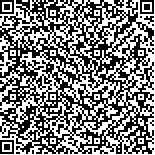罗秀,李一,曾泓辑,等.脑卒中后假性球麻痹吞咽障碍患者吞咽预后的影响因素分析及预测模型构建[J].中华物理医学与康复杂志,2025,47(4):289-294
扫码阅读全文

|
| 脑卒中后假性球麻痹吞咽障碍患者吞咽预后的影响因素分析及预测模型构建 |
|
| |
| DOI:10.3760/cma.j.cn421666-20240406-00230 |
| 中文关键词: 假性球麻痹 吞咽障碍 影响因素 预测模型 预后 |
| 英文关键词: Pseudobulbar paralysis Dysphagia Risk factors Prediction models Prognosis Stroke |
| 基金项目:河南省科技厅重点研发专项(241111310600) |
|
| 摘要点击次数: 2090 |
| 全文下载次数: 1746 |
| 中文摘要: |
| 目的 分析脑卒中后假性球麻痹(PBP)吞咽障碍患者吞咽功能预后的影响因素并构建预测模型。 方法 回顾性收集2021年1月1日至2024年1月1日期间在郑州大学第一附属医院康复医学科治疗的脑卒中后PBP吞咽障碍患者的临床资料。共纳入脑卒中后PBP吞咽障碍患者251例,根据患者出院时洼田饮水试验评级变化情况,将上述患者分为吞咽功能预后良好组和预后不良组,其中预后不良组共有患者164例,预后良好组共有患者87例。对2组患者临床资料数据进行单因素分析,将单因素分析中具有统计学意义的自变量纳入多因素logistic回归分析,从而获得影响脑卒中后PBP吞咽障碍患者吞咽预后结局的重要因素,并应用R软件将上述重要因素构建成列线图预测模型,采用受试者工作特征(ROC)曲线分析该列线图模型预测脑卒中后PBP吞咽障碍患者吞咽预后不良的能力。 结果 单因素相关分析显示,2组患者在美国国立卫生研究院卒中量表(NIHSS)评分、张口度分级及年龄方面组间差异均具有统计学意义(P<0.05);多因素logistic回归分析显示NIHSS评分、张口度分级及年龄是脑卒中后PBP吞咽障碍患者吞咽预后不良的重要影响因素;ROC曲线分析显示,由NIHSS评分、张口度分级及年龄因素共同构建的列线图模型预测脑卒中后PBP吞咽障碍患者吞咽预后不良的曲线下面积(AUC)为0.727,灵敏度为59.8%,特异度为81.6%,提示该模型具有良好的预测效能及校准度。 结论 NIHSS评分、张口度分级及年龄均是脑卒中后PBP吞咽障碍患者吞咽预后结局的重要影响因素,由上述因素共同构建的列线图模型对预测脑卒中后PBP吞咽障碍患者吞咽预后不良具有重要价值,有助于指导临床预防及治疗卒中后吞咽功能障碍。 |
| 英文摘要: |
| Objective To analyze the factors influencing the prognoses of stroke survivors with pseudobulbar palsy (PBP) dysphagia and construct a prediction model. Methods Data on two hundred and fifty-one stroke survivors with PBP dysphagia were collected and analyzed retrospectively. The subjects were divided into a good prognosis group (n=164) and a poor prognosis group (n=87) according to the results of Kubota water swallowing tests administered at discharge. Their clinical data were analyzed using univariate correlation analysis, and the statistically significant independent variables found were further analyzed using multivariate logistic regression to obtain the important predictors of prognosis. R software was then used to assemble the useful factors into a nomogram prediction model. The area under the receiver operating characteristics (ROC) curve was employed to verify the model′s predictive power. Results According to the univariate correlation analysis, significant differences were found between the two groups′ average National Institutes of Health Stroke Scale (NIHSS) scores, mouth opening grades and ages. The multivariate logistic regression analysis showed that NIHSS score, mouth opening grade and age could be useful and independent predictors of poor prognosis. The ROC curve analysis showed that the area under the curve for the nomogram model was 0.727, with a sensitivity of 59.8% and a specificity of 81.6%, suggesting that the model had good predictive power and was properly calibrated. Conclusions NIHSS score, mouth opening grade and age are independent predictors of prognosis for stroke patients with PBP dysphagia. The nomogram model constructed in this study is of great value in developing a prognosis for such patients, which is helpful in the prevention and treatment of post-stroke dysphagia. |
|
查看全文
查看/发表评论 下载PDF阅读器 |
| 关闭 |